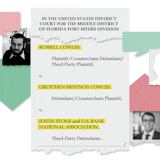On a humid evening in July, I am hanging tightly onto Angus' collar with one hand and gripping his chest with the other as we waddle in the direction of another dog's butt.
There is a wire barricade between us, for safety, and the other dog is being fed a fast and steady supply of treats to keep it from turning around. Angus swoops past the furry butt and we retreat. Success!
Yes, we are back in school. This time the class is Dog-to-Dog Socialization, and tonight's lesson is: Butt-sniffing 101.
It had never occurred to me that dogs had to learn how to sniff each other's hind quarters — isn't that something they just do instinctively? It is, but nervous dogs, timid dogs or aggressive dogs — dogs with a whole range of behaviors that fall under the umbrella term "reactive" — sometimes need to be taught. They can get so wound up when they see a strange dog that all niceties vanish in a flurry of barking, snarling and lunging.
So here we are, with four other skittish dogs, learning how to play nice.
After puppy class, obedience class, leash training, private leash-walking lessons and now this class, Angus is surely on track for his master's degree. But the more classes we take together, the better I understand him and, I hope, the better we communicate.
For instance, it has become clear to me that for all his barkiness, Angus is not aggressive — he is timid. He doesn't like strange noises, situations or animals (human, canine, or other). He barks to try to make them go away.
But once he warms up to them — and it doesn't take long — he is friendly. He barked at our instructor on the first day of class but since then has been happy to see her.


